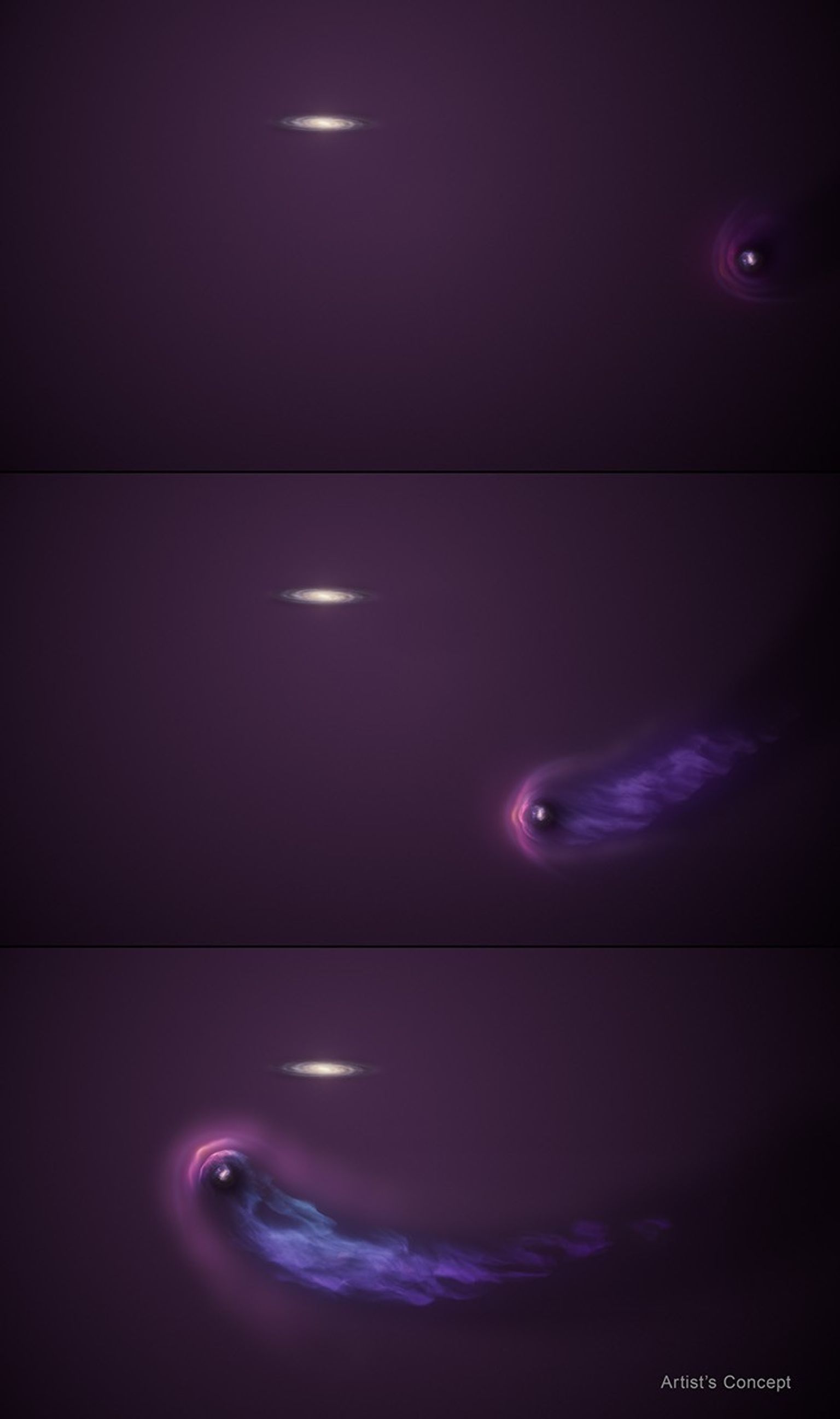The Hubble Space Telescope has taken a look at the Large Magellanic Cloud (LMC), a nearby dwarf galaxy, being stripped of its gas by the far more massive Milky Way.
The LMC is a dwarf galaxy, relatively close to the Earth (in galactic terms) at around 160,000 light years away. That may sound distant, but to put it into perspective, it takes up an area around 20 times the diameter of the full Moon in the Southern Hemisphere’s night sky.
The galaxy is especially interesting, as many astronomers believe that it is not in orbit around our galaxy, but just passing by. According to this idea, the LMC has likely just made its closest approach to the Milky Way, and has come out worse for wear following its encounter.
The team, including astronomers from NASA and the European Space Agency (ESA), attempted to get a look at the halo of gas surrounding the LMC by using 28 quasars behind it. This involved observing ultraviolet light using the Hubble Space Telescope, the only space telescope to see these wavelengths.
The bright light given off by distant quasars powered by supermassive black holes passes through the cloud, and light of specific wavelengths is absorbed as it passes through the intervening gas. By analyzing the wavelengths of the light that traversed interstellar space and ended up at Hubble, the team built up a picture of the LMC.

Artist’s concept of the close encounter between the Milky Way and the LMC.
Image credit: NASA, ESA, Ralf Crawford (STScI)
The team found that the galaxy’s halo was extremely small at around 50,000 light-years across. While this sounds gigantic, it’s about 10 times smaller than astronomers would expect for galaxies of comparable mass.
“I like to think of the Milky Way as this giant hairdryer, and it’s blowing gas off the LMC as it comes into us,” Andrew Fox of ESA and principal investigator on the observations explained in a statement. “The Milky Way is pushing back so forcefully that the ram pressure has stripped off most of the original mass of the LMC’s halo. There’s only a little bit left, and it’s this small, compact leftover that we’re seeing now.”
Despite being a little lighter for its encounter, the LMC battles on, and will likely still go on to form new stars.
“The LMC is a survivor,” Fox added. “Even though it’s lost a lot of its gas, it’s got enough left to keep forming new stars. So new star-forming regions can still be created. A smaller galaxy wouldn’t have lasted – there would be no gas left, just a collection of aging red stars.”
The team believes the LMC is safe for now. Having just moved past its closest approach, it is unlikely that the rest of the dwarf galaxy’s halo will be stolen, while the gas already stripped will eventually fall to the Milky Way. Further observations are planned on a different region of the LMC.
The study is accepted for publication in The Astrophysical Journal Letters, and is posted to pre-print server arXiv.
Source Link: The LMC Just Made A Close Approach To Our Galaxy, And Hubble Saw The Aftermath